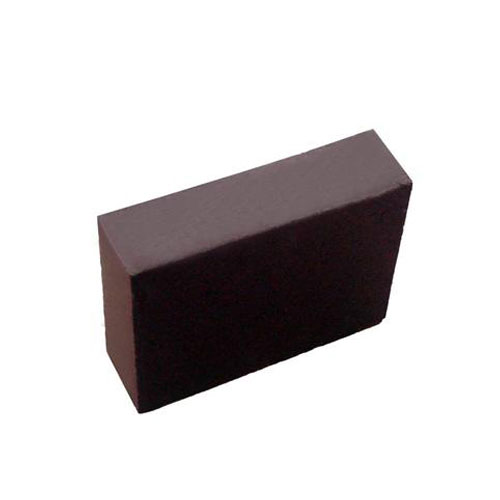Introduction of refractory bricks for AOD furnace

AOD furnace mainly smelts stainless steel. 75% of the world's stainless steel is smelted by AOD furnaces. At the beginning of the AOD furnace, oxygen is blown to oxidize and decarburize. During the oxidation period, the oxidizing property of the slag is enhanced and the temperature rises to above 1700; At this time, the alkalinity of the slag is still very low; finally, lime is added for desulfurization, and desulfurization requires high alkalinity slag. During the whole smelting process, the slag changes from acidic to basic atmosphere, from oxidative atmosphere to reducing atmosphere and then to intermittent operation. The lining temperature is high and fluctuates considerably.
By improving smelting conditions and taking gunning maintenance and other measures, the service life of AOD furnaces generally reaches more than 70 heats, and many of them exceed 100 heats. For AOD furnaces,
magnesia chrome bricks are generally used. Due to the complex production process of magnesia-chrome bricks, ultra-high temperature firing, high energy consumption, high cost, especially environmental pollution problems, magnesia-chrome bricks are gradually replaced by magnesia-calcium bricks.
At present, the development trend of
refractory bricks for AOD furnaces is that there are less and less magnesia-chrome bricks, more and more magnesia-calcium bricks, and some parts use low-carbon magnesia-calcium materials. There are also asphalt impregnation points for magnesium-calcium materials. It is worth pointing out that when the smelting temperature is high, carbonaceous refractories are not suitable due to internal redox reactions. Use magnesia-chrome bricks or magnesia-calcium bricks.
 AOD furnace mainly smelts stainless steel. 75% of the world's stainless steel is smelted by AOD furnaces. At the beginning of the AOD furnace, oxygen is blown to oxidize and decarburize. During the oxidation period, the oxidizing property of the slag is enhanced and the temperature rises to above 1700; At this time, the alkalinity of the slag is still very low; finally, lime is added for desulfurization, and desulfurization requires high alkalinity slag. During the whole smelting process, the slag changes from acidic to basic atmosphere, from oxidative atmosphere to reducing atmosphere and then to intermittent operation. The lining temperature is high and fluctuates considerably.
AOD furnace mainly smelts stainless steel. 75% of the world's stainless steel is smelted by AOD furnaces. At the beginning of the AOD furnace, oxygen is blown to oxidize and decarburize. During the oxidation period, the oxidizing property of the slag is enhanced and the temperature rises to above 1700; At this time, the alkalinity of the slag is still very low; finally, lime is added for desulfurization, and desulfurization requires high alkalinity slag. During the whole smelting process, the slag changes from acidic to basic atmosphere, from oxidative atmosphere to reducing atmosphere and then to intermittent operation. The lining temperature is high and fluctuates considerably.